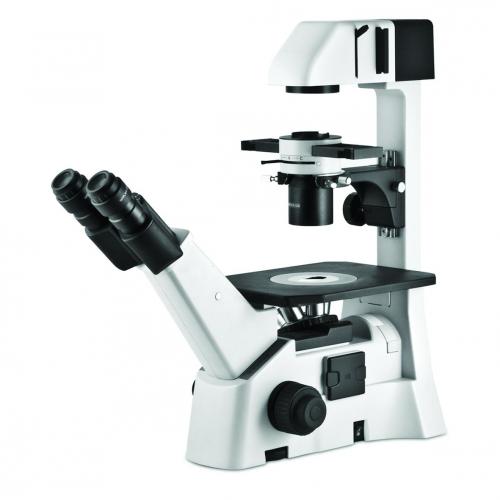Microscopes are used for a wide array of applications, ranging from scientific research to diagnosis of health problems, to study forensic reports to teach science to children in schools. Most of the microscopes that we know are upright microscopes which have the objective lens at the top and the stage at the bottom. The objective lens magnifies the sample placed on the stage when the sample is lit from below using a light source and observed using an eyepiece which further magnifies the already magnified sample image. This is the basic structure of the regular, upright microscopes that we know. So what are inverted microscopes, how different are inverted microscopes from regular ones and what advantages do they offer? Read on to know.
Inverted microscopes, contrary to the common belief have the light source and the condenser on the top of the stage and the objective lens is placed below the stage, hence the name inverted microscopes. Inverted microscopes were invented by J. Lawrence Smith in 1850 and ever since the invention, inverted microscopes are widely used for biological observations which include cells, organisms and blood samples. One of the main reasons why researches use inverted microscope is because a few samples are severely affected by gravity and settle down, which results in lesser visibility from the eyepiece that is placed above the stage in regular microscopes like compound microscope or stereo microscope. In situations like this, an inverted microscope helps visualizing the samples easily as the eyepiece and the objective lens are placed below the stage and gravity doesn’t affect the observation. Apart from the above mentioned fact, researchers have found many more advantages of these microscopes that has led to their widespread use in industrial applications as well. Here is a list of those advantages.
1. It’s quick and cost-effective
Yes, inverted microscopes are time saving and also cost effective at the same time. This is because once you focus a sample in an inverted microscope the sample stays focused for further magnifications and remains the same for all other samples with the same focal preferences. Hence it is easier to make multiple observations within a short span of time and even with little or no training one can make the observations without multiple operations and focal adjustments. Thus it reduces the workforce needed in big laboratories and saves the cost on their training.
2. More freedom
Regular, uptight microscopes have one annoying limitation that doubles the amount of work invested. This limitation is that the sample under observation should have an average height of 80 mm and a weight of 3 kg. This limitation hinders a lot of observations in industrial applications and requires that bigger samples are observed part by part. However, since the objective lens in placed below the sample, using inverted microscopes it is possible to place samples that are as heavy as 30kg.
3. It’s easier to prepare samples
As mentioned above, inverted microscopes offer flexible options to place the samples as it is without any size or height restrictions. In addition, processing of only one side of the sample is sufficient and there’s no need to embed the samples nor cut them down into smaller samples. Also, while observing there’s no need to level the sample using a sample press for accuracy. Thus inverted microscopes make it very easy to prepare samples and place them on the stage.

4. Less Risky
Crashing the objective into the sample is one of the most annoying but inevitable risks while using upright microscopes. Such events will delay the entire process and meanwhile sensitive samples might alter their state and again fresh samples have to be prepared for accuracy. However, there’s no such risk of crashing the objective into the sample in inverted microscopes as the objective lens is placed below the stage in these microscopes.
5. Easy to use
Lastly, it is very easy to use inverted microscopes (http://www.wisegeek.com/how-do-i-choose-the-best-inverted-microscope.htm) without much training as the sample moves in the same direction in the same direction as the stage is moved by the observer. Thus, it is easier for trainees and beginners to get used to the equipment quickly and go about the work without much training.